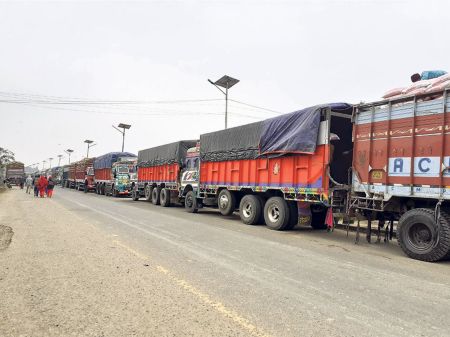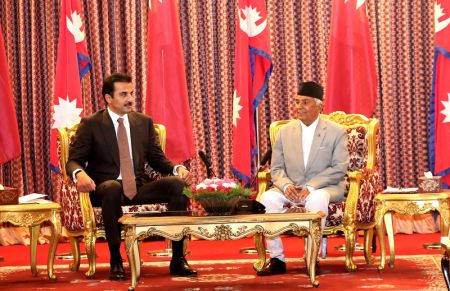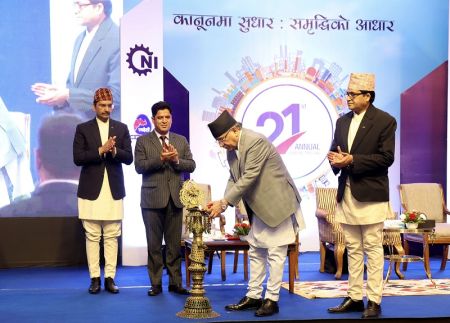.jpg)
Nepali handicrafts are produced following traditional methods, passed on from generations to generations. A set of ancestral heritage passed on from ancestors to forefathers to grandfather to father and to son. It continues and this continuity provides it the essence to remain distinct while reflecting and preserving diverse cultural values, indigenous aspects and traditions of Nepali lifestyle. Along with helping in the conservation of national heritage and culture, handicraft development creates employment opportunities and thereby contributes in alleviating poverty. Export of handicraft products has been growing since the last three decades. Arts and crafts is one of the major exporting industry of Nepal, earning foreign exchange and providing employment to thousands of Nepalis craftsmen, artisans, promoters and businessmen and generating revenue for the government.
Due to the increased competition in the international market, product diversification has emerged as an essentiality for business growth. Along with other business sectors, it is vital for the handicraft industry to adapt and correspond to industry and consumer trends and to take advantage of them. One way of doing this is to diversify products. Growing or relatively new businesses choose to expand their product range and diversify into new areas as a way of appealing to new customers and offering more to existing customers. This necessity has been felt, understood and well adapted by Nepali handicraft industries.
Handicrafts in Nepal are mainly classified in two types: textile and non- textile products. Textile products mainly include: Pashmina, woollen, felt, silk, cotton, dhaka, hemp, and allo products. The non-textile products include silver jewellery, metal craft, handmade paper products, wood crafts, glass products, bone and horn products, crystal products, ceramics products, leather goods, incense, plastic items, paubha (thanka), beads items, stone craft, and bamboo products.
“The handicraft producers are coming up with more diversification in their product be it pashmina products or handmade paper products, one can get a range of diversification in these products,” former president of Federation of Handicraft Association of Nepal (FHAN), Bikash Ratna Dhakwa said. “The handicraft sector is responding to the product diversifying trend by expanding their product range without affecting their core business in a negative way,” added Dhakwa.
“Product diversification plays vital role in creating new markets by attracting its possible buyers,” said Dhakwa while elaborating on the importance of the concept. He opines that handicraft producer must take time to think about the needs of the target market and try to identify new opportunities that will enable the business to stay ahead of competitors.
Product diversification is evident in the addition of new variety of handmade paper products in the local market. While accepting the benefits of the trend, Kiran Kumar Dangol, president of Handmade Paper Association of Nepal (HANDPASS) said, “we are following the trend and this has resulted in the addition of a number of new product ranges to our existing ranges.”He informed that the popular Nepali Lokta paper products are now being diversified further. “We are moving ahead on diversifying Nepali Lokta paper products. Along with books and stationary products, we have moved on to produce fusion of handmade paper and cotton to develop wrapper products,” said Dangol adding that they also have introduced new technology for using multicolour print in the handmade paper.
Dangol stressed on product diversification and encouraged its growing trend in the Nepali market where handicraft products hold a great importance. According to him, the market is flooded with a number of traditional handicraft products and now it’s time that the handicraft producers offer new designs and new products that will once again bring boom in the national and international market of Nepali handicrafts.
He pointed to the need of producing products with competitive prices through creative incorporation of new technologies as one of the major reason for diversifying product ranges. “Our traditional products are expensive. Production of new products through the use of new technologies assist in producing cost efficient products. Through renewed and upgraded marketing strategies we can market these products,” Dangol said while providing the introduction of handmade paper jewelleries in handicraft products range as an instance to his statement.
Product diversification has also positively impacted the industry stakeholders. Dhakwa says that the manufacturers and producers have been encouraged to hire skilled manpower from the local market to bring diversity in their product ranges. “Now we are getting more skilled technical manpower in this field,” he said. The field is becoming more open to innovative designers who can add their creativity to traditional handicraft products. As such the products become more competitive in the national and international market.
Federation of Handicrafts Association of Nepal (FHAN) says that their members are becoming more quality conscious, upgrading their products and making product prices more competitive. In the recent years, corporate houses have started using handmade papers and even Pashmina products are being purchased at the local level compared to previous years.
.jpg)
“Our new diversified product range now includes accessories for laptops and mobile,” Dhakwa said and added that international buyers are also adding up new designs through their customized demands. Handicraft exporters claim that diversified products are playing an important role to increase export volume of handicraft products in the international market.
Handicraft has become a major source of foreign currency and is one of the major industries that have good international market. Government has been promoting this sector by recognising it as producer of competitive products for the international market. Along with existing players, new traders and producers are joining this industry and some of them are taking it online for making their products directly accessible to the international customers and market.
During the first six months of the current fiscal year handicraft products (paintings, sculptures and statuary) worth Rs 292.10 million were exported to the international market, which is an 34 per cent increment compared to the same period last year, the Trade and Export Promotion Centre noted. Though the woollen carpet export increased by 40.3 per cent totalling up to Rs 3.63 billion trade, export of woollen and pashmina shawls during the same period increased only by ten percent with a total export of Rs 1.20 billion.





















